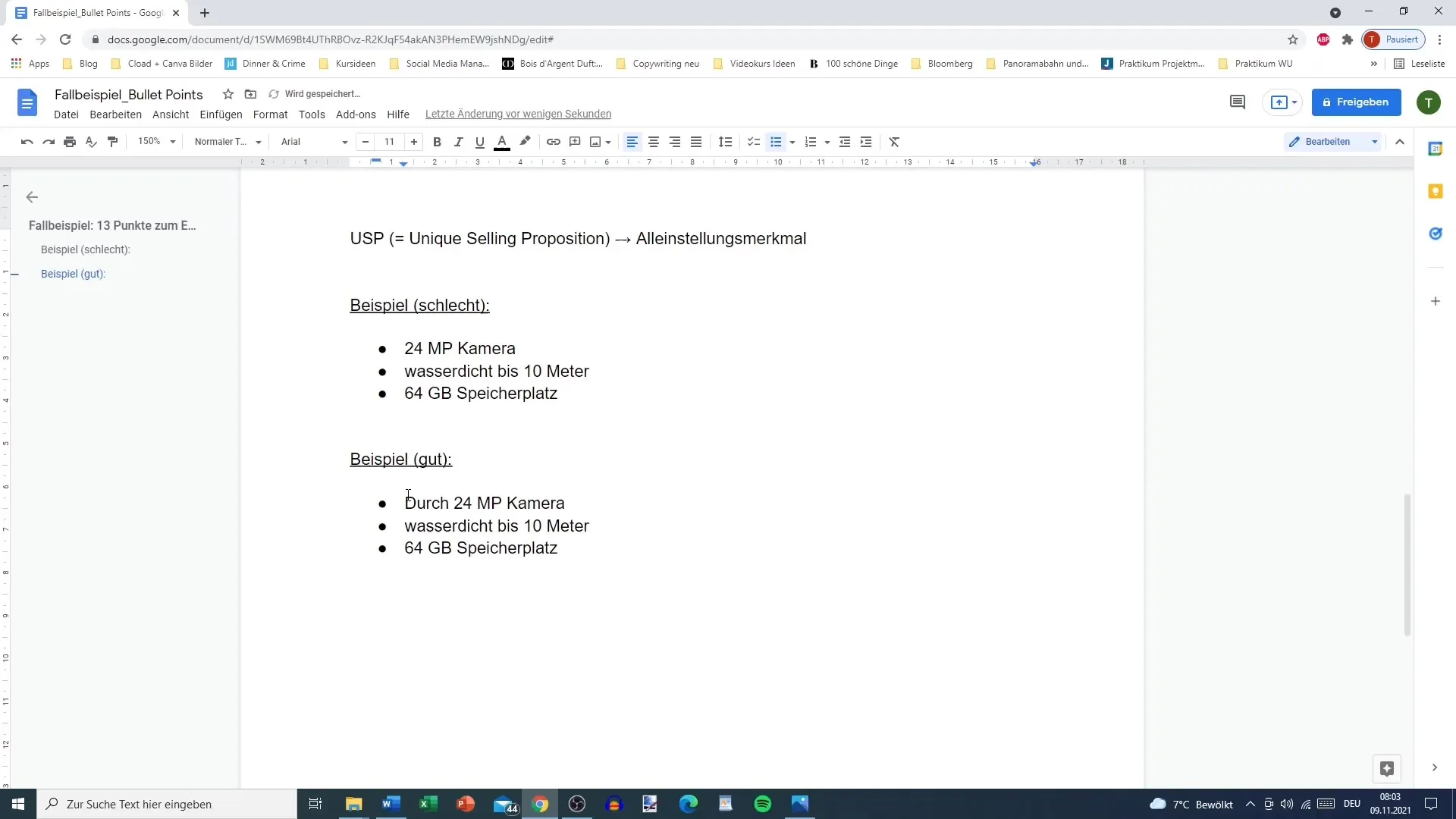Bullet Points are a crucial element in sales and marketing communication. They help to present important information clearly and concisely. However, often the mistake is made of focusing solely on the features of a product without highlighting the benefits for the customer. This guide will show you how to effectively design bullet points to capture the interest of your target audience and motivate them to take action.
Key Insights
- Bullet Points should highlight the benefits of a product or service.
- Instead of just listing features, focus on what these features mean for the customer.
- The number of bullet points can vary depending on where they are used.
- Avoid omitting bullet points, especially on sales pages and product descriptions.
Step-by-Step Guide
Step 1: Understand the goal of your bullet points
Before you start writing, think about what you want to achieve with your bullet points. Ask yourself: What interests my target audience? What information is relevant to them? Understanding your target audience is the key to successful use of bullet points.
Step 2: Focus on formulating the benefits
Instead of just listing technical features like "24-megapixel camera," formulate the benefit: "High-resolution 24-megapixel camera for sharp vacation photos." This appeals to the buyer's emotions and answers the question every potential customer asks: "What's in it for me?"
Step 3: Use clear and concise language
Your bullet points should not only be informative but also easy to understand. Avoid jargon that could be confusing to the customer. Each bullet point should ideally represent a clear benefit that the customer immediately recognizes.

Step 4: Keep the bullet points concise
Ideally, you should use between five and seven bullet points. This allows customers to quickly grasp the information without feeling overwhelmed. However, in longer descriptions on landing pages, you can integrate more bullet points.
Step 5: Tailor the bullet points to your target audience
It's important to tailor the context of your bullet points to the target audience. For example, if you are writing for a photography enthusiast audience, focus on features that enhance photography. If you are targeting a different audience, such as heavy phone users, the focus could be on battery life.
Step 6: Vary the wording
To avoid monotonous wording, make your bullet points sound diverse and interesting. Change the initial words and try to use synonyms to make the text more dynamic.
Step 7: Test your bullet points
After formulating your bullet points, test how well they resonate with the target audience. You can conduct A/B tests to determine which variants work best. Analyze the responses and adjust your bullet points accordingly.
Step 8: Strategically integrate bullet points
Place your bullet points strategically – in product descriptions, on landing pages, or in newsletters. They are particularly important on sales pages to encourage quick decisions. Bullet points provide valuable information to customers at a glance.
Summary
Bullet points are an indispensable tool for effectively communicating the benefits of your products. Make sure not to focus solely on technical features but to highlight their advantages for the customer. A conscious and thoughtful use of bullet points can significantly influence your customer's decision.
Frequently Asked Questions
How many bullet points should I use?Ideally between five and seven, depending on the context.
How can I best formulate the benefits?Turn technical features into statements that emphasize the benefit for the customer.
Can bullet points be omitted?It is advisable not to omit them, especially not on sales pages.
Should bullet points always look the same?Vary the formulations to make them more interesting.
Where is the best place to insert bullet points?On sales pages, in product descriptions, or in newsletters, they are particularly effective.


